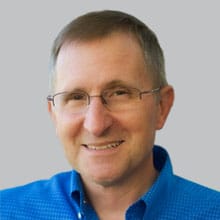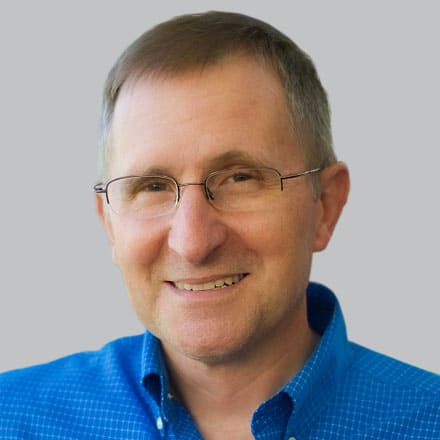Inside Angle
From 3M Health Information Systems
Physicians, EHRs and New York City cab drivers
On a recent business trip to New York City, I take a taxi to JFK Airport from Lower Manhattan in late afternoon traffic. The cab driver tunes into a radio channel with up-to-the-second traffic reports and decides to shift from his familiar route to avoid backed-up freeway traffic. All seems well enough until the cab driver says with a forced smile and a healthy dose of sarcasm, “Let’s use the technology!”—as if this will make the traffic disappear. He makes an abrupt U-turn while using one hand to start his cell phone GPS app.
Since he’s listening to the traffic broadcast, he doesn’t use the GPS audio, but looks back and forth between his cell phone and the road ahead. He rests the heel of one hand on the steering wheel, while he works the mobile GPS app with the fingers of both hands. I’m looking at the back of the cab driver’s head as it bobs up and down between his phone and the stop-and-start Manhattan traffic.
It suddenly feels unbearably hot in the cab and I try roll down the back-seat window. The driver shakes his head: “No sir. The exhaust gets to me,” he says. “I’ll turn up the air. Okay?” The air conditioning fan roars and his ponytail flaps in a fierce front-seat wind, but I get little relief behind the plexiglass barrier.
“Which terminal at Delta?” he asks. I search my wallet for my itinerary. “Terminal one or two?” He asks again, perturbed, “They’re not in the same place, you know.” He has one finger raised, ready to type the Delta terminal number into his cell GPS. He glares at me in the rear-view mirror instead of watching the road. I lean in to the small opening in the plexiglass and raise my voice to be heard above the blaring traffic broadcast and air conditioning. “It’s terminal two.”
Despite “the technology,” we still end up on a jammed expressway. When the driver’s radio channel broadcasts another traffic alert, he rests a spiral notebook on the steering wheel and makes a few notes. I’m not making this up. He consults his cell phone GPS, then swerves quickly from the far-left lane to the far-right lane to take an exit. He looks at his cell again, types in a new search, changes his mind and moves back to far-left lane. Did I mention the honking and swearing? I’m afraid the poor guy will have a stroke. He clearly hates the technology but feels obligated to use it. I try to tell him: I’m not in such a rush. I have enough time. But he can’t hear me.
What comes vividly to mind during this wild cab ride is how much it resembles my recent visit to a new doctor. I talk to the back of the doctor’s head or play peek-a-boo over the top of his computer monitor while he types into the EHR, asking a string of standard questions to fill on-screen data fields. I must tell him three times about my allergic reaction to amoxicillin and list prescription medications I’ve taken for a decade. So much for interoperability. Also, it’s all business. He’s in a mad rush to finish the exam in the 15 minutes allowed and he’s laser-focused on the EHR. No chitchat—even though research tells us small talk during exams often reveals useful clues about a patient’s state of mind or circumstances at home or work aggravating his or her illness. I want to quip, “Doc, we just don’t talk anymore.”
I visit this new doctor because my internist of 15 years—a trusted family friend—has recently shifted to a concierge practice we can’t begin to afford (it would triple our family’s annual cost for care). Why did he change his practice? He was burning out, working 12 or more hours a day—many of the extra hours poured into the EHR and other computer-related administrative tasks. He had twice the number of patients he could manage well. Being the conscientious type, he attended closely to patients in person, rarely shifting his attention to a computer during exams. He never appeared to be in a hurry. Then, after seeing patients, he sacrificed personal time after hours to finish the administrative tasks. Years of this, along with a growing list of compliance and documentation demands, plus an ever-increasing patient load from his hospital employer, nearly pushed him out of medical practice altogether. “I just can’t do it this way anymore,” he tells me. “I want to give patients the care they deserve.”
The June 8, 2019 New York Times includes a harrowing article by Dr. Danielle Ofri about physician burnout. She even goes so far as to say the business of health care inadvertently exploits the integrity and professionalism of caregivers. I think of my former doctor. “For most doctors and nurses, it is unthinkable to walk away without completing your work because dropping the ball could endanger [their] patients,” Ofri says. And yet: “This month the World Health Organization recognized the serious effects of burnout from chronic workplace stress burnout levels among doctors are at new highs, far worse than among the general population, and increasing relentlessly.” Burnout among nurses follows a similar trend.
The use of technology—especially EHR data entry and other computer-based administrative work—are at the center of this struggle. Few have captured the complexity of the physician vs. technology problem better than Dr. Atul Gawande (See his article, “Why Doctors Hate Their Computers” in The New Yorker).
Gawande estimates that more than 90 percent of American hospitals have been computerized in the last ten years. He cites a 2016 study that found “physicians spent about two hours doing computer work for every hour spent face-to-face with a patient.” But Gawande doesn’t deny the compelling benefits of the EHR—such as allowing him to remotely check the vital signs of patients recovering from surgery at the hospital or access patient test results with a few clicks. EHRs can provide real-time prompts to assist treatment. Records from multiple hospitals can be scanned “to identify patients who have been on opioids for more than three months, in order to provide outreach and reduce the risk of overdose.”
The technology is here to stay. It’s essential for compliance and interoperability with other caregivers. It’s saving lives. No going back to the paper-based world when there was no way to track and resolve unsafe practices. The days when a cardiologist could stray from best practice treatment for congestive heart failure with life-threatening results and there would be no way to know. The potential of big data in health care appears limitless. Can clinician’s resistance or our current approach to technology be blamed for the real problems we face? We’re talking about a seismic change and systemic challenges of broad scope. Likely an inevitable rough ride to revolutionary advancements in health care. The challenge is to find ways to leverage technology without creating barriers and dangerous distractions.
After all, doctors—and cab drivers—literally hold our lives in their hands. We rely on their full attention to understand every detail of our condition, so they can prescribe the right medications, diagnostic tests and surgical procedures—or get us where we’re going in one piece.
So back to my cab ride to JFK:
In the crush of the stop-and-go freeway traffic, the driver gets a phone call from his wife, Gabrielle, who is stranded at the Gotham Gastroenterology Clinic—without a cell phone, purse or insurance card—awaiting her colonoscopy procedure. Fortunately, the driver takes the call hands-free.
This is the truth. Hand on my heart.
There’s a passionate argument in what sounds like Portuguese until an outraged Gabrielle abruptly hangs up. “My wife! She makes me crazy!” The driver takes both hands off the wheel to make a why-me gesture to the heavens. “She leaves her cell phone at home. Now she’s stuck at the doctor. How can I call her?” I suggest through the opening in the plexiglass barrier that he could call the doctor’s office after we get to the airport but he’s already doing a hands-on Google search for the Gotham Gastroenterology Clinic. It occurs to me to offer to find the phone number for him, but I fear this will distract him even more.
Perhaps the answer is a second cab driver in the front passenger seat—one cabbie to drive safely while another navigates the GPS and communications. This idea—though clearly unsustainable for the taxi business—has actually taken hold in health care. Medical scribing is a fast-growing healthcare occupation—essentially providing this “passenger-seat” assistance to physicians. Medical scribes take notes, enter details about the ongoing exam in the EHR, access test results in real time and even prepare prescriptions for later approval—all while the physician gives her full attention to the patient, including eye contact and small talk (see Gawande also on medical scribing).
Meanwhile, I’m still living in the one-cab-driver world.
I start to feel carsick and try the Lamaze breathing my wife used during childbirth, then recall the trick of focusing on a faraway horizon to steady my nerves (and stomach). Far out on the Hudson I see a cargo ship big enough to be an island. It’s helps because I realize how much safer I would be on that ship than I am in this taxi. I ask myself: When is the last time I have known the first name of a cab driver’s wife and that she is about to have a colonoscopy?
By now, the driver has reached the Gotham Gastroenterology Clinic via cell phone. Hold music comes on and he rolls his eyes. He lets go of the steering wheel again, his cell phone in hand. When he sees me watching, he says, “Okay, I’ll put it away,” but he never does.
So, what can be done? What are the next steps—even the baby steps?
Perhaps something like this: A little better than the doctor hunched over his computer is the doctor who turns her computer around, so clinician and patient can view the EHR together. (This is where my comparison to taxi drivers ends). And how much better yet if the computer were all but invisible to the patient—not a burden to clinicians but freeing them more than ever to interact directly with patients, face-to-face, without barriers (see Atul Gawande on virtual scribes). The EHR of the future can empower patients to take an active role in their own care—working in tandem with their clinicians. This kind of collaborative use of technology can ease burdens for both clinicians and patients. This is a vision we can all get behind.
Steve Cantwell is a senior marketing communications specialist at 3M Health Information Systems.
For more on this topic, see Dr. Gordon Moore’s Inside Angle podcast, Physician burnout: How can we improve the work of care? In this episode, Dr. Moore interviews Dr. Christine Sinsky, Vice President for Professional Satisfaction with the American Medical Association (AMA) and a national leader in studying the connection between joy in work and health system performance.


